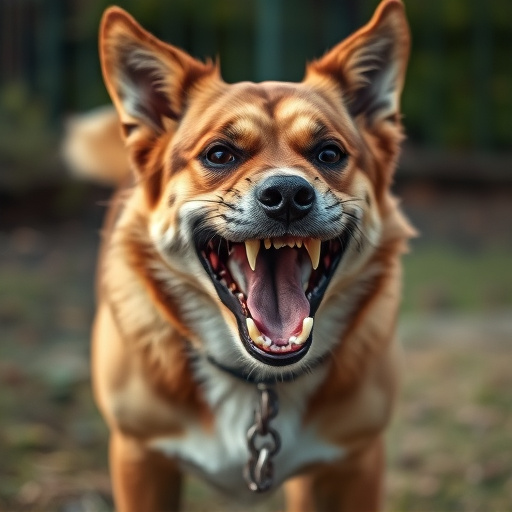Mace Canine Spray is a non-lethal deterrent for managing dog behavior using capsaicin from chili peppers. Effective when aimed at face and eyes from 3-5 feet, it creates a barrier to divert aggressive dogs without causing excessive distress. Proper usage and storage techniques are crucial for safety and maximum efficacy, with pattern width varying for confined or open spaces.
“Unleash control with a safe and effective dog deterrent—Mace Canine Spray. This comprehensive guide explores the power of this versatile tool, delving into its ingredients, safety, and effectiveness. Learn how understanding the spray’s pattern width can optimize protection for your space.
From application techniques to best practices, we’ll navigate responsible use and storage, ensuring a secure environment for both you and your four-legged companions. Discover why Mace Canine Spray is a game-changer in dog deterrence.”
- Understanding Dog Spray: Ingredients & Safety
- Evaluating Effective Deterrent Strategies
- Mastering Mace Canine Spray Application
- Analyzing Spray Pattern Width for Optimal Protection
- Best Practices for Responsible Use & Storage
Understanding Dog Spray: Ingredients & Safety
Dog spray, often referred to as Mace canine spray, is a safe and effective deterrent designed to control and manage unwanted dog behavior. When used correctly, it can quickly disrupt an aggressive or territorial dog’s pattern of behavior. The spray is formulated with specific ingredients that create a temporary but powerful barrier between the user and the dog.
Ingredients in dog spray are carefully chosen for their ability to deter without causing permanent harm. Common components include capsaicin, the active ingredient found in chili peppers, which irritates the dog’s eyes and nose, disrupting its behavior pattern. The spray is typically applied from a distance, aiming for the face and eyes, ensuring safety while effectively diverting the animal. With proper usage, dog spray can be a reliable tool to manage encounters with potentially dangerous dogs, making it a valuable asset for pet owners, walkers, and professionals working with canines.
Evaluating Effective Deterrent Strategies
Evaluating effective deterrent strategies is paramount when ensuring the safety of both dogs and their owners. One popular option, Mace Canine Spray, has garnered attention as a potent tool for deterring aggressive behavior. The spray’s unique pattern width—a crucial factor—delivers a targeted yet wide-reaching protection. This ensures that both the dog and its owner are covered, making it an appealing choice for those seeking a safe, effective deterrent.
When considering any deterrent method, understanding its reach and impact is essential. For Mace Canine Spray, the pattern width allows for a swift response to various threats, making it particularly useful in unpredictable situations. Its effectiveness lies not only in the spray’s range but also in its non-lethal nature, which is a significant advantage over other deterrents, ensuring minimal harm while maximizing safety.
Mastering Mace Canine Spray Application
Mastering the proper application of Mace canine spray is paramount for its effectiveness as a deterrent. Aim for a specific target zone—typically the face and eyes—to minimize collateral damage and maximize impact. The ideal Mace Canine Spray Pattern Width should be approximately 3 to 5 feet, allowing for accurate targeting while maintaining safety distances from bystanders.
A consistent, swift motion is key when deploying the spray. Aim slightly above eye level and sweep the nozzle in a downward motion across the target area. Practice in open spaces to familiarize yourself with the range and spread of the spray, ensuring you can effectively deter an approaching dog without endangering others or causing excessive distress.
Analyzing Spray Pattern Width for Optimal Protection
When considering a dog spray as a deterrent, understanding the spray pattern width is crucial for optimal protection. Different mace canine sprays have varying range and distribution of their mist, which directly impacts its effectiveness. A broad spray pattern ensures that a larger area is covered, making it ideal for deterring aggressive dogs or those in packs. This feature is particularly useful in open spaces like backyards or parks where dogs can quickly approach from multiple directions.
Conversely, a more focused spray pattern can be beneficial for confined spaces or scenarios where direct and precise deterrence is needed. By analyzing the Mace canine spray pattern width, users can strategically position themselves and ensure that any potential attacker is within the effective range. This knowledge allows for swift and confident use of the spray when necessary, enhancing personal safety during encounters with aggressive dogs.
Best Practices for Responsible Use & Storage
When using a dog spray, such as Mace Canine Spray, it’s crucial to employ best practices for responsible use and storage. Always adhere to the manufacturer’s guidelines regarding application technique. The optimal spray pattern should be aimed at the animal’s face, with a width that covers their eyes, nose, and mouth, as this area is most sensitive. This targeted approach ensures maximum deterrence without causing excessive harm or stress to the animal.
Storage is equally important. Keep dog sprays out of reach of children and pets, in a secure location where they are not easily accessible. Proper storage helps prevent accidental use and maintains the integrity of the product, ensuring its effectiveness when needed. Remember, responsible ownership includes being mindful of how and where you store your pet deterrents for both safety and ethical reasons.
Mace canine spray, when used responsibly and in accordance with best practices, can be an effective deterrent for dog aggression. Understanding the spray’s ingredients, application techniques, and optimal spray pattern width (as discussed in this article) is crucial to ensuring its safety and efficacy. By mastering the art of spray application and adhering to responsible use guidelines, pet owners can create a safer environment for themselves and others while respecting their canine companions’ well-being.
